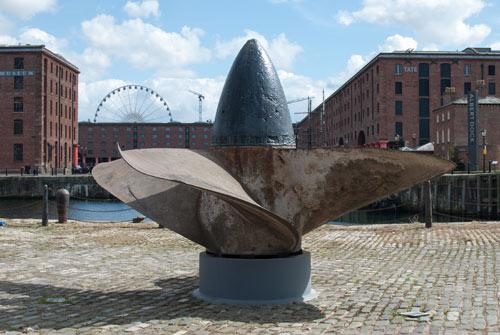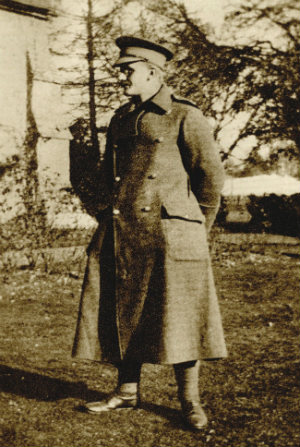Osmund Bartle Wordsworth - a survivor of Lusitania
For the 102nd anniversary of the tragic sinking of RMS Lusitania in 2017, guest blogger Lucy London told us about her research project and how she came across a Lusitania survivor as a result.

The Lusitania propeller on the quayside opposite Merseyside Maritime Museum
Since 2012 I have been researching the First World War for a series of commemorative exhibitions. I began by researching women poets and discovered quite a few poets with a link to Merseyside, for instance, May Sinclair, very famous on both sides of the Atlantic in the early 20th century, was born in Rock Ferry, Wirral. I then moved on to forgotten male poets and, again, found quite a few with links to Merseyside who were not as famous as Wilfred Owen, Siegfried Sassoon and Robert Graves.
The role of women during the First World War came next; then I added the heading ‘Fascinating Facts’, such as Rin Tin Tin the American film star dog found as a puppy in a bombed out kennels by an American soldier. During the course of my research to commemorate 1917, I discovered a writer called Osmund Bartle Wordsworth, who was related to the poet William Wordsworth of 'Daffodils' fame. I was interested to discover that Merseyside Maritime Museum was looking for further information about Lusitania survivors, and Osmund was one of those.

Courtesy of The Warden and Scholars of Winchester College
Osmund Bartle Wordsworth was born on 18 May 1887 at Glaston, Rutland. He was educated at Winchester College, and later won a scholarship to Trinity College, Cambridge. He lectured in Classics at Selwyn College, Cambridge and then sailed to Canada in 1914 to take up a teaching post at Trinity College, Toronto. That same year he published a novel called 'The Happy Exchange' (using the pen name Herbert B Thorneley).
After war broke out, he decided to return to Britain to enlist in the Army and set sail from New York on board Lusitania on 1 May 1915, accompanied by his sister Ruth Mary. Osmund was one of the last to leave the sinking ship and gave his lifebelt to another passenger. He and his sister survived the sinking but neither knew the other had survived until they met up in Ireland. A month later Osmund was commissioned as a 2nd Lieutenant in the 9th Battalion Oxfordshire and Buckinghamshire Light Infantry, later transferring to the 21st Company Machine Gun Corps in April 1916. Sadly, Osmund was killed in the fighting on the Western Front on 2 April 1917. He has no known grave and is remembered on the Arras Memorial in France. My research is very much on-going. If you have any poets, inspirational women or fascinating facts that I have not yet researched, please get in touch via the blogs:
- www.femalewarpoets.blogspot.co.uk
- www.inspirationalwomenofww1.blogspot.co.uk
- www.fascinatingfactsofww1.blogspot.co.uk
- www.forgottenpoetsofww1.blogspot.co.uk
